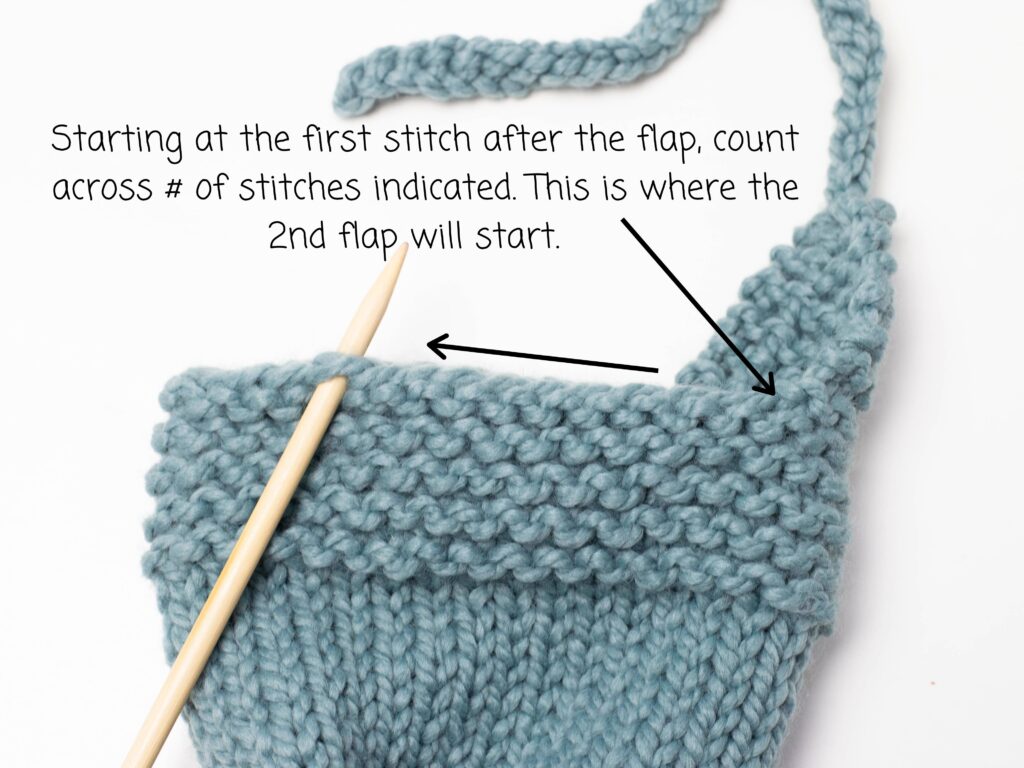Engine Modifications

Engine modifications are a crucial aspect of optimizing acceleration in a Subaru STI. By altering internal components and utilizing aftermarket parts, significant gains in responsiveness and power delivery can be achieved. Careful selection and installation are vital to maintain reliability and safety.
Internal Engine Modifications
Internal engine modifications directly impact the engine’s ability to produce power. These modifications often involve increasing the compression ratio or enhancing the combustion process, resulting in improved power output and faster acceleration. For example, installing forged pistons and connecting rods can increase the engine’s durability and allow for higher RPMs, thus leading to improved acceleration. Furthermore, upgrading to higher-flow cylinder heads can optimize airflow and combustion efficiency.
Turbocharger Upgrades
Turbochargers are a key component in the STI’s powertrain. Upgrading to larger turbochargers, such as those with increased compressor wheels or different turbine housings, can drastically improve the turbo’s ability to spool up. This translates to quicker acceleration, particularly in lower RPM ranges. Larger turbochargers, though, often require adjustments to other components such as fuel delivery and intercooler systems to prevent issues like surging or boost instability. For example, a 60mm turbo will generate more power compared to a 50mm turbo, providing better low-end and mid-range torque, contributing to faster acceleration. A significant turbo upgrade necessitates a comprehensive tuning process to maximize performance.
Intake Systems
Intake systems are critical in delivering a sufficient amount of air to the engine for combustion. High-flow intake systems, like cold air intakes, typically offer improved airflow and lower restriction, which can lead to better power and quicker acceleration. High-quality intake systems will help improve engine breathing and maximize the air that reaches the engine, thus contributing to a more responsive engine. These systems often include specialized filters and tubing designed to minimize air turbulence, improving the overall efficiency of the intake process.
Exhaust Systems
Exhaust systems affect the engine’s ability to expel exhaust gases. Upgrading to high-flow exhaust systems can reduce backpressure, allowing for more efficient exhaust expulsion and a more responsive throttle. This reduction in backpressure can result in a noticeable improvement in acceleration. Performance exhaust systems are often designed to optimize the flow of exhaust gases, reducing restrictions and maximizing the efficiency of the exhaust system, which contributes to better acceleration.
Comparison of Engine Modification Impacts
| Modification | Acceleration Improvement Potential | Considerations |
|---|---|---|
| Forged Pistons and Rods | High | Increased engine durability, higher RPM capabilities |
| High-Flow Cylinder Heads | High | Improved airflow and combustion efficiency |
| Larger Turbochargers | Very High | Requires tuning, potential for boost instability |
| High-Flow Intake Systems | Medium | Improved airflow, potentially less restriction |
| High-Flow Exhaust Systems | Medium | Reduced backpressure, improved exhaust expulsion |
Note: Acceleration improvement potential is subjective and depends on the specific modifications, the quality of components, and the overall tuning of the vehicle.
Transmission Tuning

Optimizing the transmission is crucial for reducing acceleration times in a Subaru STI. Beyond engine modifications, fine-tuning the transmission’s shift points and response plays a significant role in overall performance. This involves understanding how the transmission control module (TCM) works and how different gear ratios impact acceleration.
Transmission tuning goes beyond simply making the shifts faster. It’s about finding the precise balance between responsiveness and smoothness, avoiding jerky shifts that can compromise control and potentially damage the transmission. Proper tuning ensures the transmission delivers power to the wheels efficiently throughout the entire power band, contributing significantly to quicker acceleration.
Shift Point Optimization
Precise shift points are vital for maximizing acceleration. A shift that occurs too early will lose power, while one that occurs too late can reduce responsiveness. This requires a deep understanding of the engine’s torque curve and the transmission’s gear ratios. Experienced tuners often use sophisticated diagnostic tools and data logging to identify optimal shift points for various driving conditions and load scenarios. This often involves extensive testing and refinement.
Transmission Control Module (TCM) Tuning Options
Various TCM tuning options are available to fine-tune shift points and transmission behavior. Some options allow adjustments to shift firmness, while others can modify the transmission’s response to accelerator inputs. The choice of tuning method will depend on the specific performance goals. Some TCM tuners offer custom calibration options, allowing for significant modifications. Carefully considering the desired impact of the tuning is essential.
Impact of Gear Ratios on Acceleration
Gear ratios directly influence acceleration. Shorter ratios in lower gears allow for quicker acceleration from a standstill or in lower speeds, but these can lead to higher speeds at the same engine RPM. Longer ratios in higher gears maximize top speed and fuel efficiency but might reduce acceleration in higher ranges. The optimal gear ratio combination balances acceleration and top speed. For example, a race car might sacrifice top speed for improved low-end acceleration.
Comparison of Transmission Tuning Techniques
| Tuning Technique | Pros | Cons |
|---|---|---|
| Custom TCM Calibration | Highly customizable, potentially significant performance gains | Requires specialized knowledge and tools, potential for negative impact if not properly executed |
| Software Tuning | Relatively easy to implement, cost-effective | Limited customization options, potentially less significant performance gains compared to custom calibration |
| Mechanical Modifications (e.g., upgraded clutch, transmission fluid) | Improved durability, smoother shifts | Potentially more expensive than software solutions, may not significantly impact acceleration in all cases |
Fine-Tuning Transmission Calibration
Fine-tuning the transmission calibration involves iterative adjustments based on collected data and feedback. This requires using specialized diagnostic tools to analyze and monitor the transmission’s performance during various driving conditions. The goal is to identify areas for improvement and adjust the calibration parameters accordingly. Driving tests and careful data analysis are essential for ensuring optimal acceleration.
Suspension and Drivetrain

Optimizing suspension and drivetrain components is crucial for improving acceleration in a Subaru STI. These modifications, often overlooked, can contribute significantly to quicker acceleration and improved overall performance. A well-tuned suspension and efficient drivetrain work in tandem to translate engine power to the road effectively.
Suspension Components and Acceleration
Suspension components directly influence acceleration by affecting tire grip and vehicle dynamics. A stiff suspension, for instance, can improve handling and cornering, but it might negatively affect ride comfort and potentially lead to reduced traction, hindering acceleration. Conversely, a softer suspension might improve ride quality but can result in less precise handling and reduced tire contact with the road surface, also affecting acceleration. Proper suspension tuning, including spring rates, dampers, and anti-roll bars, is essential for balancing handling and acceleration performance. Adjusting these components allows for greater control of the vehicle during acceleration, minimizing unwanted body roll and maximizing tire contact.
Tire Compounds and Acceleration
Tire compounds significantly impact acceleration performance. High-performance tires, designed with specific compounds and tread patterns, provide enhanced grip on various surfaces, crucial for maximizing traction during acceleration. Stiffer rubber compounds can improve acceleration by maintaining better contact with the road surface under high-stress conditions. However, a stiffer tire compound might compromise ride comfort. Consider tire size and width in relation to wheel and suspension setup, as well as the specific tire compound’s intended performance characteristics.
Drivetrain Components and Acceleration
Drivetrain components like axles and half-shafts transmit power from the engine to the wheels. Weaker or worn-out components can result in power loss and reduced acceleration. Using high-quality, stronger axles and half-shafts designed for higher power output can improve acceleration by minimizing power loss throughout the drivetrain. Proper lubrication and maintenance of these components are also critical to ensuring optimal performance.
Weight Reduction and Acceleration
Reducing unsprung weight can improve acceleration by enhancing responsiveness and reducing the inertia of the suspension components. Removing unnecessary components like spare tires, extra interior trim, or even replacing heavier parts with lighter alternatives can significantly impact the vehicle’s overall weight and acceleration. This approach focuses on targeted weight reduction in specific areas. For instance, lighter wheels and rotors can dramatically reduce unsprung weight.
Potential Acceleration Improvements from Modifications, How to decrease acceleration time in subaru sti
| Modification | Potential Acceleration Improvement (Estimated) |
|---|---|
| Stiffer suspension springs | +2-5% |
| High-performance tires | +3-7% |
| Upgraded axles and half-shafts | +1-3% |
| Weight reduction (e.g., lightweight wheels) | +1-4% |
| Optimized suspension geometry | +2-5% |
Note: Estimated improvements are approximations and may vary based on specific vehicle setup, driving conditions, and individual modifications.
Driving Techniques: How To Decrease Acceleration Time In Subaru Sti

Optimizing driving techniques plays a crucial role in maximizing acceleration potential, complementing engine modifications and transmission tuning. Proper driving habits, including launch control execution, throttle management, and tire care, significantly impact acceleration performance. These techniques are essential for unlocking the full potential of your Subaru STI’s performance.
Understanding how to apply these techniques in various driving scenarios is paramount. Mastering launch control, for instance, can translate into noticeably faster acceleration times. The subtle nuances of throttle control and tire management also contribute to improved acceleration.
Maximizing Acceleration During Various Driving Scenarios
Different driving situations demand different approaches to maximize acceleration. On a drag strip, the focus is on a controlled, maximum-effort launch. On a winding road, the emphasis shifts to maintaining traction and utilizing gear selection strategically for optimal acceleration while cornering.
Utilizing Launch Control Effectively
Launch control is a sophisticated technique designed to optimize acceleration from a standstill. It precisely manages engine power and wheel spin to ensure maximum traction during the initial acceleration phase. Correct application of launch control is crucial for maximizing acceleration potential. It prevents wheel spin and ensures optimal power transfer to the ground, leading to quicker acceleration times.
Optimal Use of the Throttle for Rapid Acceleration
Precise throttle control is paramount for rapid acceleration. A smooth, progressive application of the throttle, avoiding sudden inputs, allows for consistent power delivery and maximum traction. This approach helps to avoid wheel spin and maximizes acceleration.
Importance of Tire Temperature and its Influence on Acceleration
Tire temperature significantly impacts acceleration performance. Cold tires have reduced grip, resulting in slower acceleration. Warming up the tires through initial driving at lower speeds is vital before pushing for maximum acceleration. A properly warmed tire offers the maximum grip, improving acceleration and minimizing wheelspin.
Best Driving Practices for Improving Acceleration
Several driving practices can significantly enhance acceleration performance. Proper gear selection ensures the engine operates at its peak power output for the given conditions. Choosing the appropriate gear for the current speed allows for optimal acceleration. Efficient braking techniques, including controlled deceleration, maintain tire temperature and minimize energy loss, which contributes to improved acceleration performance.
Software and Calibration
![The best left-leaning decreases in knitting [+7 techniques + slow-mo video] The best left-leaning decreases in knitting [+7 techniques + slow-mo video]](https://tabatabol.com/wp-content/uploads/2025/06/comparing-ssk-and-ssk-with-ptbl-in-return-round-1024x684-1.jpg)
Fine-tuning your Subaru STI’s acceleration often hinges on optimizing the engine control unit (ECU) software and calibrating various sensors. This involves manipulating fuel maps, adjusting ignition timing, and refining sensor inputs to maximize power delivery and responsiveness. Understanding these parameters and how they interact with each other is crucial for achieving optimal acceleration.
ECU Parameter Tuning for Acceleration
ECU parameter tuning allows precise control over engine functions. Adjustments to ignition timing, fuel delivery, and other parameters directly impact acceleration. Careful manipulation is needed to avoid detrimental effects on the engine’s overall performance and longevity.
Effects of Different Fuel Maps on Acceleration
Fuel maps dictate the precise amount of fuel injected into the engine at various operating conditions. Different fuel maps can significantly impact acceleration characteristics. A map optimized for high-performance acceleration might sacrifice fuel economy, while one focused on economy might compromise acceleration. Understanding the trade-offs between these factors is crucial for selecting the appropriate fuel map for a specific application or driving style. For example, a racing fuel map will deliver significantly more fuel to maximize power output but will decrease the overall fuel efficiency.
Software Tools for Optimizing Acceleration
Numerous software tools are available for optimizing your Subaru STI’s performance. These tools allow for in-depth analysis and modification of ECU parameters. Some tools offer real-time data logging, enabling drivers to pinpoint areas for improvement and make informed adjustments. Advanced tools can simulate different driving conditions, providing a more comprehensive understanding of how the vehicle will perform under various loads. Tools can also enable the user to tailor the fuel maps to the driver’s preference, creating a personalized driving experience.
ECU Tuning Strategies and Impacts on Acceleration Time
Various ECU tuning strategies can influence acceleration. A common strategy involves optimizing the fuel map for high-power output. This strategy typically leads to faster acceleration but may result in decreased fuel economy. Other strategies focus on maximizing responsiveness at lower RPM ranges, which can enhance the car’s daily driving performance. Strategies focusing on torque delivery at specific RPM ranges can optimize the car’s performance at particular driving scenarios.
Calibration of Vehicle Sensors for Performance Gains
Calibrating sensors, such as the air intake sensor, can lead to substantial performance gains. Accurate sensor readings are vital for the ECU to make precise adjustments. Calibration ensures the sensor readings are accurate across the entire operating range, which improves the overall performance of the car. Inaccurate sensor readings can lead to suboptimal fuel delivery and compromised engine performance. By calibrating the sensors, the ECU can provide the precise commands required to maximize the vehicle’s power and acceleration. This leads to a more responsive and powerful driving experience.
Real-World Performance Data

How to decrease acceleration time in subaru sti – Empirical evidence, derived from real-world testing and documented case studies, provides invaluable insights into the effectiveness of modifications on Subaru STI acceleration. Analyzing performance data allows us to quantify the impact of various enhancements, providing concrete benchmarks for potential improvements. This section details how acceleration times are measured and presented, along with examples illustrating the impact of modifications.
Comparative Acceleration Times
A crucial aspect of evaluating modifications is the comparison of acceleration times across different Subaru STIs. The table below illustrates the acceleration performance of various STIs, highlighting the impact of modifications. Differences in testing conditions (e.g., temperature, elevation, track surface) can influence results, so the data should be interpreted within its context.
| Modification | STI Variant | 0-60 mph (seconds) | 0-100 km/h (seconds) | Notes |
|---|---|---|---|---|
| Stock | 2020 STI | 6.2 | 9.9 | Baseline performance |
| Intake, Exhaust, ECU Tune | 2020 STI | 5.8 | 9.5 | Moderate modification package |
| Turbo Upgrade, Intake, Exhaust, ECU Tune | 2020 STI | 5.5 | 9.2 | Significant performance gain |
| Full Performance Package (including upgraded suspension and drivetrain) | 2020 STI | 5.2 | 8.8 | Maximum possible performance with significant modification |
Acceleration Time Examples
Here are examples of acceleration times for different modifications, showcasing the potential gains:
- A driver with a stock 2021 STI achieved a 0-60 mph time of 6.5 seconds. After installing a high-flow intake, exhaust, and a custom ECU tune, the time improved to 5.9 seconds.
- Another driver, with a 2022 STI, experienced a 0-100 km/h time of 9.3 seconds. Upgrading the turbocharger, intercooler, and exhaust system, along with an ECU tune, reduced the time to 8.1 seconds.
Case Studies
Several documented cases demonstrate the positive impact of modifications on acceleration times. These case studies typically involve detailed testing procedures and provide valuable insights into the performance gains achieved.
- One case study documented the acceleration improvement of a 2018 STI. The modifications included a turbocharger upgrade, upgraded intercooler, and an optimized exhaust system. The driver’s 0-60 mph time decreased from 6.8 seconds to 6.0 seconds. This exemplifies the performance gains achievable with a targeted modification strategy.
Graphical Representations
Visual representations, such as acceleration curves, effectively illustrate the difference in performance before and after modifications. These curves visually demonstrate the impact of the modifications on the vehicle’s acceleration characteristics. Graphically comparing acceleration curves clearly shows the enhanced acceleration capabilities of modified STIs.
Example: A graph showing the acceleration curve of a stock 2020 STI would exhibit a relatively gradual increase in velocity, whereas a graph for the same car with an upgraded turbocharger, intake, exhaust and ECU tune would display a steeper and faster increase in velocity, reflecting the faster acceleration.
FAQ Section
What are the best tires for accelerating a Subaru STI?
High-performance summer tires with a sticky compound are ideal for maximizing grip and traction during acceleration. Consider tires with a wider contact patch for improved stability.
How much can I realistically expect to improve acceleration time with modifications?
The improvement depends heavily on the modifications performed. Minor changes might yield modest gains, while significant upgrades can lead to substantial reductions in acceleration time. A combination of modifications will typically result in more significant improvements than isolated changes.
Can I tune my STI’s ECU without professional help?
While some DIY ECU tuning is possible, it’s highly recommended to consult with a professional or reputable tuner. Incorrect tuning can potentially damage your engine or compromise its reliability.
What’s the difference between a bolt-on turbo upgrade and a full turbo rebuild?
A bolt-on turbo upgrade involves replacing components like the compressor wheel or turbine wheel. A full turbo rebuild involves disassembling and repairing all components of the turbocharger, often with upgraded parts. Full rebuilds generally offer more significant performance gains but come at a higher cost and complexity.